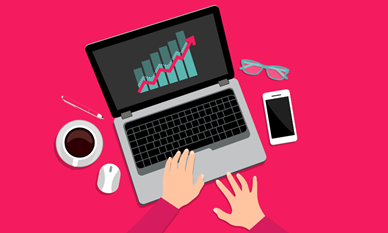Five ways employees can take control of their own wellbeing
Making just small, simple lifestyle changes and introducing preventative habits can make a big difference to our overall wellbeing. Empowering employees to look after themselves is not only good for them, it’s good for business and for wider society too. Here’s why.
Did you know that around four in 10 cancers can be prevented through healthy lifestyle changes1? According to the World Health Organisation (WHO), four types of behaviour – poor diet, smoking, physical inactivity and excess alcohol intake – account for 60% of premature deaths worldwide2.
Despite this, a recent report from the Vitality Research Institute revealed that people are spending longer in ill-health as a result of chronic diseases driven by unhealthy choices and lifestyle factors, such as diabetes, musculoskeletal conditions and mental health3. As a result, people are living a greater proportion of their lives in ill-health than they were 30 years ago – on average 12 years (14% longer than in 1990), the research showed.
It’s widely known that lifestyle choices such as eating well, not smoking, exercising regularly and not drinking too much help us stay healthy. And while there can be many complex factors at play with a serious illness, making just simple and small changes to our lives can be enough to make a significant difference.
‘Healthspan’ not lifespan
Research suggests even moderate changes to physical activity and diet, resulting in minor improvements in metabolic risk, can have a material impact on a person’s lifespan and healthspan, the number of years they can expect to live in good health. For example, a 30-year-old man of average health could gain 2.8 years of healthy life through moderate changes to physical activity and diet, while a 30-year-old female who makes a moderate increase in physical activity and diet could add three years of good health4.There are positive steps employees can be encouraged to take to preserve their mental health too. According to a Deloitte report from January 2020, a sixth of workers were experiencing a mental health problem at any one time, while stress, anxiety and depression are thought to be responsible for almost half of working days lost in Britain due to health issues5. The onset of Covid-19 only saw this situation worsen, with ONS stats revealing that instances of depression doubled during the first part of the pandemic6.
GP consultations, talking therapies and other forms of psychological support, such as cognitive behavioural therapy (CBT), alongside prescribed forms of medicine, are available for those who may need help – especially where there may be a diagnosis of mental illness. Alongside the NHS, support can also be offered through employer-led private health insurance and other related products via an employee benefits-driven workplace wellbeing programme.
That aside, empowering employees with the right knowledge and tools to allow them to preserve their own mental health and wellbeing is not only good for individuals, it benefits the business as a whole and wider society too. The UK is estimated to lose approximately £92bn a year to ill-health related absenteeism and presenteeism7. Around 40% of this productivity loss - equivalent to £39bn per annum - is due to employee lifestyle behaviours and poor mental wellbeing. Here are just five things individual employees can do to take preventative steps in their owns lives and at work.
1) Physical activity
Physical activity can increase our lifespan8, as well as reduce our risk of serious and chronic illnesses. But evidence also shows that it can help prevent health conditions and to treat them if they occur. It is also effective at reducing fatigue, improving alertness and concentration, and enhancing our overall cognitive function. In other words, it can boost our energy, mood and performance9. The NHS recommends 150 minutes of moderate exercise a week, or 75 minutes of vigorous exercise for our overall health. Just a 10-minute walk can be as effective as a 45-minute workout in relieving symptoms of anxiety and depression10.2) Healthy sleep
Sleep is critical to our health and wellbeing. It affects almost every type of tissue and system in our bodies, including brain, heart, lungs, metabolism, immune system and mood. Poor sleep increases the risk of high blood pressure, heart disease, obesity, diabetes and lead to early death11. There are also close associations between poor sleep and mental health issues. Historically, it was thought that where both are present, not sleeping well was a consequence of poor mental health. But increasingly evidence is showing they are connected – there is a bidirectional relationship between them, which means they influence one another12.3) Limit alcohol
Alcohol is a depressant and disrupts the chemistry of the brain – the neurotransmitters that influence our mood. Over time, this can worsen symptoms of anxiety and depression. It can also disrupt our sleep and weaken its quality when we do sleep, which can negatively impact our physical and mental health. A 2018 study found that the more we drink before sleep, the greater the negative impact. For example, high alcohol consumption was found to decrease sleep quality by 39% - compared to 9.3% for low amounts13. On top of this, it can put strain on other areas of our lives, such as work and relationships, which can also lead to mental health challenges14.4) Breathing exercises
When our stress response is triggered, our autonomic nervous system enters fight or flight mode. Stress hormones are released, and these create a set of physical reactions that change our state of mind. One of these responses is breathing. For example, faster shorter breaths when in a state of greater stress and anxiety. However, we can change our breathing to influence our mind, prompting our body to revert to a state known as rest and digest. Engaging in this can also help distract us from troubling or repetitive thoughts – a common CBT technique.5) Mindfulness
Mindfulness is learning how to be fully present and engaged in the moment, aware of our thoughts and feelings without distraction or judgment. Through meditation and greater self-awareness, these practices can help us become more aware of our thoughts, feelings and body sensations, so that instead of being overwhelmed by them we are more able to manage them. Recommended as a preventative mental health tool by the National Institute for Clinical Excellence (NICE), mindfulness was also found to have the same effect as anti-depressants in reducing symptoms of depression and anxiety15.Five ways to boost physical activity in the workplace.
1. Try audio-only meetings, so they can walk and talk
2. Build activity into social occasions – meet outside or on the move
3. If using public transport, exit early to walk part of the journey
4. Walk or cycle instead of driving
5. Schedule time each week for physical activity – employees should stretch 10 minutes a day
Earn CPD.
Returning users can log into the Vitality Academy or new users can register for the Vitality Academy.
Where to next?
-
The psychology of employee engagement
A whole load of psychology and behavioural economics goes into building an effective wellbeing programme that successfully encourages positive lifestyle choices. Here are eight tips to offering the right rewards.
-
Measuring ROI: The case for employee wellbeing
With no playbook for measuring return on investment (ROI) for wellbeing initiatives, where on earth should employers start?
-
Insights Hub
Our Insights Hub brings you our range of adviser content - from video series to articles & blogs.
1. British Journal of Cancer, March 2018
2. World Health Organisation
3. Maximising quality of life: A primer on healthspan and lifespan, Vitality Research Institute
4. Maximising quality of life: A primer on healthspan and lifespan, Vitality Research Institute
5. Deloitte, Mental health and employers: Refreshing the case of investment January 2020
6. ONS data June 2020
7. Britain’s Healthiest Workplace 2019, Vitality and RAND Europe
8. Saarland University, Germany, 2015
9. Anxiety & Depression Association of America
10. Anxiety & Depression Association of America
11. https://www.ninds.nih.gov/Disorders/patient-caregiver-education/understanding-sleep
12. https://www.sleepfoundation.org/mental-health
13. https://pubmed.ncbi.nlm.nih.gov/29549064/
14. https://alcoholchange.org.uk/alcohol-facts/fact-sheets/alcohol-and-mental-health
15. Meditation Programs for Psychological Stress and Well-being, JAMA Network, March 2014


